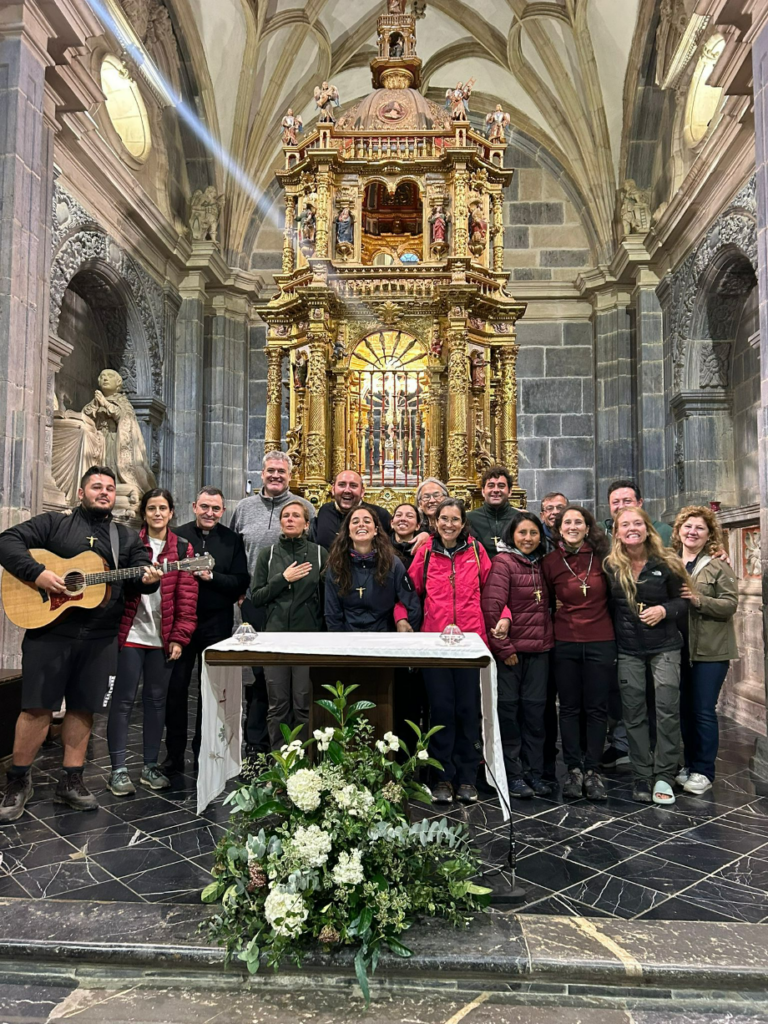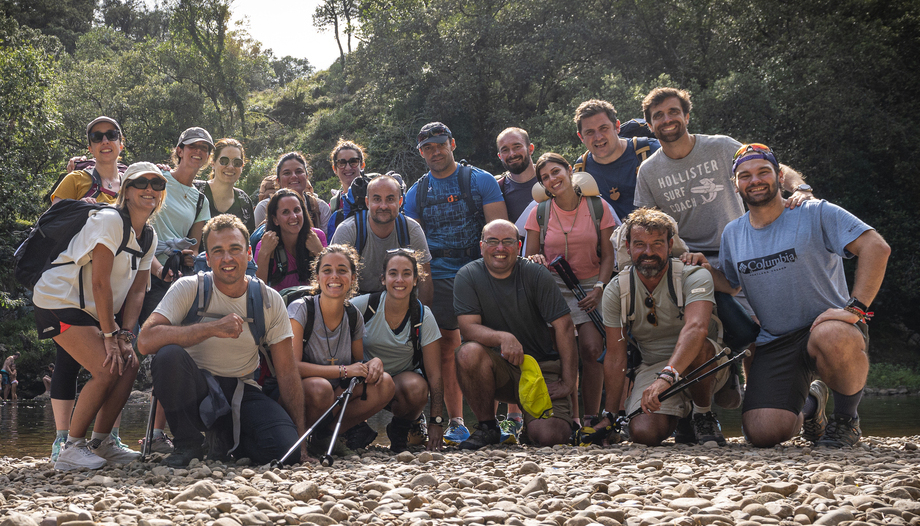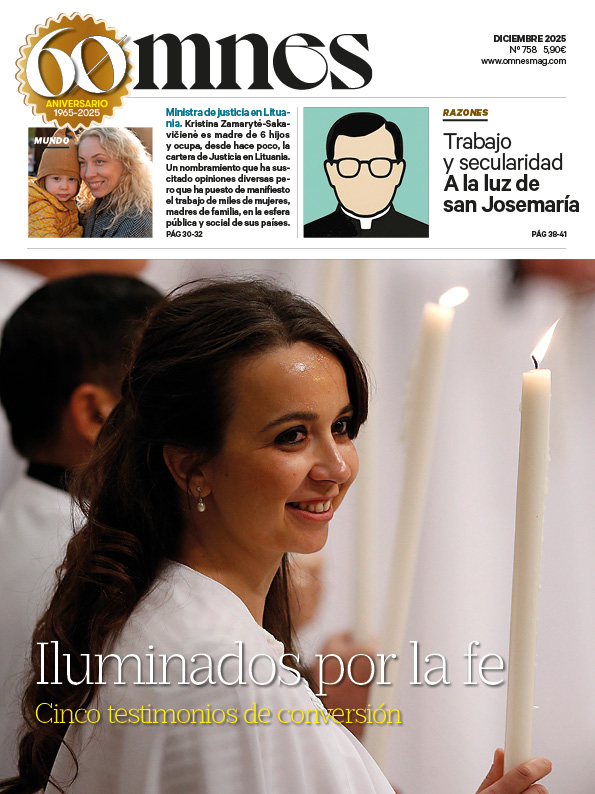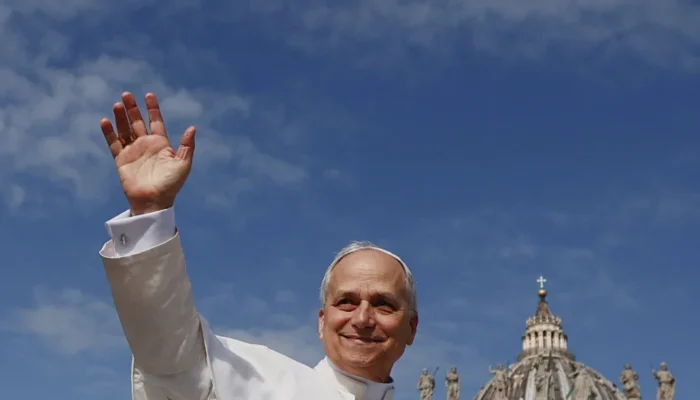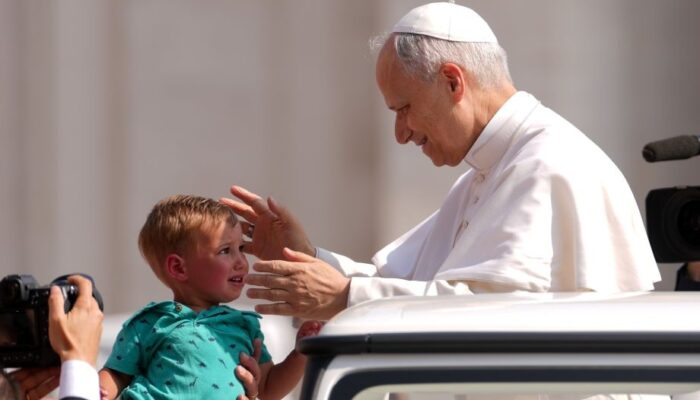January 2022. Carlota Valenzuelaa 32-year-old woman from Granada, sets out on a pilgrimage on foot from Finisterre to Jerusalem. After a happy childhood, she studied Law, Political Science and an MBA in Foreign Trade at ICEX. At 28, she knew four languages, worked in a good position in the multinational Acciona and had a great social life in Madrid. However, despite his achievements, he felt empty inside.
Carlota puts it this way: "After achieving much of what the world calls 'success,' something was missing in my heart. I thought it made sense to ask God, who created me, what He wanted from me to make me happy. After beginning a routine of constant daily prayer, God put in my heart the desire to go on pilgrimage to Jerusalem." He adds, humorously, "that one has to be careful about the things one asks God," but it seems that his sincere willingness to find "His will" bore fruit and greatly increased his intimacy with God during the eleven months of his "walk" through Europe (he traveled through Spain, France, Italy, Slovenia, Croatia, Montenegro, Albania, Greece, Cyprus and Israel).
Jerusalem
During the journey, Carlota experienced the beauty of the Church and the power of Providence. Every night she had to look for a home willing to take her in. However, when she arrived in Israel, her plans were cut short when she received the news of the end of her grandmother's illness. Before catching a plane to Granada, she had time to visit the Holy Sepulcher and put her hand in the hole where Christ's cross was nailed. After traveling 6,000 kilometers he was expecting a great spiritual gift when he arrived at the most important holy place in Christianity.
But he felt nothing.
Only silence.
Silence and disappointment,
especially for not having obtained a special divine grace commensurate with all the spiritual gifts he had received in the previous months.
He landed in his homeland in time to accompany his grandmother in her last moments. And in those moments, taking her by the hand, "I understood that Christ was truly present in the suffering flesh of my grandmother. Everything I did not feel in the Holy Sepulcher I found there, where the Lord was waiting for me".
After the death of her grandmother, Carlota returned to the Holy Land and went on pilgrimage there for two weeks.
Dedicated to evangelization
The pilgrimage experience completely transformed Carlota's life and she decided not to return to her job but to dedicate herself to evangelization: she gave conferences with her testimony in many cities in Spain and Latin America; she spent three months on mission in Argentina; she wrote a "Via Crucis" meditating on the passion from the feminine heart; and she presented the documentaries of the series "Hagan Lío", by Juan Manuel Cotelo, documenting stories of people who have responded to God's call with generosity and effectiveness.
Carlota's latest project began to take shape at the beginning of 2024. Together with her friend Diana, she walked the 72 kilometers of the Camino Lebaniego, where she was convinced that it might make sense to organize some pilgrimages, with a strong spiritual sense, to bring souls closer to the feet of the largest "lignum crucis" in the world.

And so it was that in May he took a first group of 20 pilgrims. As the spiritual fruits for the participants were very positive, he decided to take new groups in August and two more in October. The last pilgrimage was attended by various Catholic leaders: priests and nuns present in the social networks or lay people dedicated to evangelization.
What is the Lebaniego Way
The Camino Lebaniego is one of the most unique pilgrimage routes in Spain, leading to the Monastery of Santo Toribio de Liébana, in Cantabria. This monastery is famous for guarding the largest Lignum Crucis in the world, the largest known fragment of Christ's cross, making it an important destination for faith and spirituality. The wood measures 635 mm at the vertical pole and 393 mm at the crossbeam, with a thickness of 40 mm.

It was Saint Toribio of Astorga, custodian of the relics of Jesus Christ in Jerusalem, who with the permission of the Pope of his time, took a piece of the arm of the Cross of Christ to Astorga, the city of which he was Bishop. This relic was transferred in the 8th century to Liébana, as the Christians wanted to make it safe from the Muslims, who were well advanced in their invasion. Since then, thousands of pilgrims have traveled this route to venerate the "Lignum Crucis", giving the monastery a privileged place like Jerusalem, Rome or Santiago de Compostela.
A pilgrimage that is easy to organize

Planning a pilgrimage along this route is easy and accessible thanks to its official website, Caminolebaniego.com This site provides all the information needed to walk it: detailed maps, recommendations for accommodation and services, and practical information about the stages. The signposting of the trail, marked with a red cross on a white background, ensures a smooth experience even for novices.
The Camino Lebaniego not only stands out for its religious relevance, but also for the beauty of its landscapes. The route starts from the Cantabrian coast, in San Vicente de la Barquera, and enters the spectacular valleys and mountains of the Picos de Europa. Each stage surprises with its natural richness, combining the murmur of rivers, the serenity of forests and breathtaking views. There are, of course, some stretches of asphalt, although the roads are safe and not very busy.

Voices that narrate the experience of the road
Carlota proposes the Camino Lebaniego as a path of ascent to the cross, because to reach the Monastery of Santo Toribio you have to climb from the sea (if you leave from San Vicente de la Barquera) or other places of origin. For the people who have lived this pilgrimage guided by the woman who walked from Finisterre to Jerusalem, this experience has created a space for introspection, healing and encounter with the divine. In the words of those who have lived this experience, the Camino Lebaniego is not only a physical journey, but an authentic spiritual journey.
For Fernando Gutiérrez, lay missionary and founder of Mary's Children Mission, the pilgrimage was a physical challenge that allowed him to "suffer with the Lord" and to find Him in the small gestures and pure hearts of the other companions. "It was an unforgettable experience, because of the presence of the Crucified Lord and his incomparable love from the Cross, in a context comparable to the walks that Jesus made with his disciples".

In a similar tone, Reyes and Alberto, parents carrying the burden of the recent loss of a son, relate how walking to Santo Toribio offered them enormous consolation: "Our cross, which was very heavy, suddenly began to become lighter and to make some sense".
Mercedes, another of the pilgrims, shares how this experience marked a turning point in her spiritual life: "I come from some very difficult years, and being able to leave my burdens to Jesus makes me feel lighter. In addition, the open and respectful environment allowed me to break down prejudices about the Church and experience the sacrament of confession after decades of not practicing it. It was a new beginning. It has also been a great experience to share all my questions and doubts about the Church with my fellow pilgrims. I have been away from the Church and with a very limited faith for many years, and even angry that I do not understand many of the limitations of the Church. This pilgrimage has helped me to break down prejudices, find a super open and respectful environment to share my faith, and also my lack of faith, and realize that we are united by more than what separates us. I continue to work on the questions that still remain unanswered for me with respect to the Church, but now I live it from reconciliation and building bridges, not from anger".
Rodrigo, a Passionist religious, highlights the impact that walking with other walkers has had on him, because "sharing experiences of faith with humble and admirable people has challenged and enriched me deeply. In the veneration of the Cross that we made when we arrived at Santo Toribio, I said to myself: 'At the Cross, everything changes'. I shared with my companions that those of us who are priests usually hear many spiritual reflections, but they are from other priests, the bishop or the provincial superior, but rarely do we hear reflections from the laity. And for me it was a joy to listen to lay people so full of God, who shared their spiritual vitality in a natural way. It was something that enriched me enormously".
For Monica, this pilgrimage was a great gift, "which I still have and will always have, I gained intimacy with God, which until then I did not have; to know and savor being in silence and contemplate the exterior and interior beauty that is in everything you do. Since I walked, I feel stronger, more courageous, aware that I have Him and His Mother; I feel certain of their love, that they are with me!
Father Steven is a diocesan priest who serves several villages in the Picos de Europa. On three occasions he has had the opportunity to offer his pastoral services on pilgrimages with Carlota and considers it "a great gift". He emphasizes the union that is born in these meetings: "We are a family spread throughout the world. Faith in Jesus Christ unites us and gives us life, and this is evident in this experience. Carlota easily transmits a deep and precious relationship with the cross, which is contagious in the conversations with the pilgrims, the confessions and the Eucharist".

Another of the local characters that one can meet when walking the Camino Lebaniego is Fidel, the best known cab driver in the area. In his daily work he attends to many pilgrims carrying their belongings, picking them up when they are injured or taking them to Santander or other places when they finish their walk. Although he is used to seeing the transformation of the pilgrims, meeting Carlota's groups has given him and his wife a great boost to their spiritual life, to the point that he tries to fit in his schedule to participate in the daily mass or other activities with the groups.
Sonia Ortega, professor of Sacred Scripture at the University of San Damaso and responsible, together with her family, for a mission in Liberia, defines the experience as "a spiritual itinerary. For her, the journey was a reflection of life itself: "On the road you face difficulties, you overcome them, you go up, you go down, but always with hope. Reaching the foot of the Cross cannot be described in words, you have to experience it.
The Camino Lebaniego, narrated through these voices, is presented as a transforming experience where faith, community, nature and personal rediscovery are combined. As Carlota says, "to go on pilgrimage is to pray with your feet". Each step towards Santo Toribio not only brings pilgrims closer to the "Lignum Crucis", but also to a spiritual renewal that transcends the material and leaves an indelible mark on their lives.
